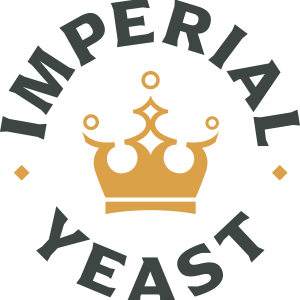No matter the occasion, there’s nothing quite like a crisp, cold beer. From crisp session ales to richly layered historical stouts, the world of beer is as expansive as it is inviting—and it’s one that homebrewers of all levels can tap into right from home. Just like any great homebrew day, success begins with a solid recipe.
Step-by-step instructions aren’t just useful—they’re foundational, providing clarity for both seasoned homebrewers and those just entering the world of home fermentation. These carefully crafted guides help prevent off-flavours, streamline your process, and enhance the final product. Whether you’re building a wort chiller, selecting your yeast strain, or even exploring strategy in an online setting, understanding the structure behind the process is key to achieving consistent, satisfying results.
Reading casino reviews is a kind of recipe for a great game. For example, casino review sites on Slotozilla help you avoid mistakes, choose the best bonuses, and find the platform that’s right for you faster. And yet, if you are a true malt drink lover, if you’d like to save some money and impress your friends with a tasty pint, check out the top 10 homemade beer recipes in this guide.
Simple Pale Ale
Ales are among the most popular choices of drink for first-time brewers – and for good reason. Boasting a mid-range ABV content and subtle malty notes, pale ales deliver punchy, yet beginner-friendly, results.
The at-home brewing process for this drink is straightforward. Add light liquid malt extract, hops, and dry ale yeast to create a delectably hearty concoction; remember to allow your hops to simmer for around an hour.
Amber Ale
For a tinge of sweetness, add an amber ale recipe to your repertoire. This beer merges the ‘more-ish’ nature of caramel with clear bitterness, culminating in a decidedly relaxing drinking experience.
This one utilises a slightly different approach compared to traditional pale ales, as amber ales incorporate mild and crystal hops to form the final product. The brewing process is much the same here – just boil your wort, reduce the heat, throw in the malt extract, and initiate a one-hour boiling timer.
Continue to add hops to increase flavour and texture, being careful not to overdo certain ingredients or underserve others. In the end, you should have a smooth, sweet, and simultaneously bitter beer.
Dry Irish Stout
Every home-based brewer should learn how to make a dry Irish stout, with this being a stalwart in the beer space. Unlike other stouts that you may be familiar with, dry Irish stouts are not to be made sweet, chocolatey, or overbearingly bitter. The key here is borderline flavourlessness. But you’re not drinking this for flavour.
Add roasted barley, Irish yeast, hops, and follow the steps mentioned already in this guide to put this recipe together. While this one might sit heavy on your stomach, do not let its dark colour fool you – the ABV for dry Irish stouts sits far below traditional beers. Often, dry Irish stouts are in the sub-5% range.
Chocolatey Stout
If the dry Irish stout had little to do with flavour, consider this recipe as its more immature younger brother. Creating chocolatey stouts can be a bit of a gamble, but the result is worth the effort.
Hailing from England, chocolate stouts incorporate sweet lactose and cocoa pieces to add a hint of appreciable sweetness. Barley and yeast also enter the fray, with the usual boiling and cooling method necessary to conjure the perfect chocolatey and alcoholic texture.
Hazy IPA
After something to drink in the sunshine on a summer’s day? Look no further than a hazy IPA.
Packed to the brim with juicy notes, little to no bitterness, and giving the appearance of a soft drink, this alcoholic beverage purveys an unabashedly relaxing sentiment. Much of a beer’s character lives not just in the liquid, but in the aroma that fills the air—bright, bold, and unmistakably fresh.
This sensory depth emerges from a thoughtful blend of citrus-forward hops, expressive yeast, sugar, liquid malt extract, and humble oats. There’s nothing overly technical about the recipe—it’s the kind of brew that proves simplicity, when done right, can be profoundly satisfying.
Citrus Shandy
Perhaps an unexpected addition in the middle of this list is the increasingly popular citrus shandy. This cool, light, and low-percentage drink originates from Germany, allowing rookie brewers to tell friends they’ve made a German beverage (even if it is tremendously simple!).
Perfect for a get-together during Oktoberfest, citrus shandy is comprised of wheat and light liquid malt extract, Saaz hops, yeast, and priming sugar. Add a splash of lemon juice or your lemonade mix to the beverage after the fermentation process is complete to top off the recipe, and you’ll have a simple citrus shandy ready to drink.
Belgian Pale Ale
Belgium is renowned for more than just delicious chocolate, as proven by the so-called ‘saison’ put forth by the nation’s brewers. Developing a Belgian pale ale at home is very simple, especially when compared to alternative drinks.
However, be prepared for hints of powerful spice and ample carbonation; Belgians don’t mess around when it comes to fizz! Your ingredients for this recipe are some Pilsner liquid malt extract, Styrian Golden hops, Saaz hops, Saison yeast, and a smattering of priming sugar. Once fermented, you should have a wonderfully fruity, fizzy, and flavourful Belgian pale ale.
Basic Blonde Ale
North American beers cover a deluge of flavours, markets, and preferences. A basic US blonde ale represents one of the more simplistic options, as suggested by its title, yet presents an easily digestible, low-malt, and low-bitterness experience. Specifically tailored to new brewers and those trying alcoholic drinks for the first time, blonde ales require just a little liquid malt extract, cascade hops, Lutra Kveik yeast, and priming sugar as usual.
Honey Ale
Ales are a mainstay in this guide, with the accessible nature of brewing this alcoholic beverage providing the ideal gateway to other options. Honey ale is only a smidgen more complex than the drinks discussed thus far. One primary issue that beginners encounter is adding the honey too early, so be sure to only dollop the sweet, gloopy substance after mixing the dark liquid malt extract, chocolate malt, hops, yeast, and priming sugar.
The Rise of Wheat Beer and How to Brew It at Home
Wheat beer is increasingly appearing on store shelves and craft pub menus. Its mild flavour, light acidity, and fruity notes (often with hints of banana or clove) appeal to both seasoned connoisseurs and newcomers. It is especially popular in the summer – it refreshes better than many other styles. How to homebrew wheat beer at home:
Ingredients:
- 50% wheat malt and 50% barley (pilsner or pale)
- Hops (e.g., Hallertau or Saaz)
- Yeast (Hefeweizen style or specialised for wheat beer)
- Water
Process:
- Mashing: Heat water to ~65°C and steep the grains for about an hour.
- Filtration and homebrewing: Strain the wort, add hops, and boil for 60 minutes.
- Cooling and fermentation: Cool to ~20°C, add yeast, and leave to ferment for 7–10 days.
- Bottling: Bottling with a small amount of sugar for carbonation. Leave for another 1–2 weeks.
The finished beer should pour with a gentle haze, offering smooth mouthfeel and a vibrant, citrusy aroma—hallmarks of a well-executed unfiltered wheat style.








